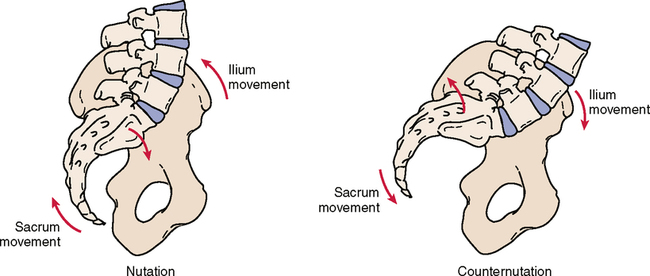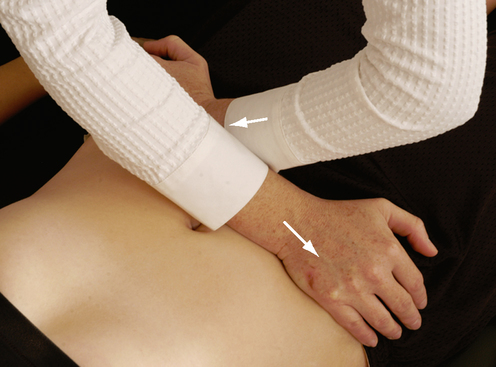CHAPTER 9 Précis of the Pelvis Assessment* Resisted isometric movements (supine) Functional test of supine active straight leg raise test Sacroiliac rocking (knee-to-shoulder) test Gapping (transverse anterior stress) test Passive movements (side lying) Reflexes and cutaneous distribution (supine, then prone) Cephalad movement of the sacrum with caudal movement of the ilium Cephalad movement of the ilium with caudal movement of the sacrum Palpation (prone, then supine) *The examination is shown in an order that limits the amount of moving or position changing the patient must do, yet ensures that all necessary structures are tested. NUTATION AND COUNTERNUTATION1–4 • During extension, or backward bending, of the trunk, the innominate bones (i.e., the pelvic girdle) as a whole unit rotate posteriorly (nutation) on the femoral heads bilaterally. If one leg is actively flexed at the hip, the innominate on that side unilaterally rotates posteriorly. • During the posterior rotation of the innominate bones, the innominate slides anteriorly along the long arm of the sacral joint and superiorly up the short arm of the sacral joint. This movement is the same as sacral nutation. With backward bending, the two PSISs move inferiorly an equal amount. IPSILATERAL PRONE KINETIC TEST PASSIVE EXTENSION AND MEDIAL ROTATION OF THE ILIUM ON THE SACRUM1,5 PASSIVE FLEXION AND LATERAL ROTATION OF THE ILIUM ON THE SACRUM1,5 GAPPING (TRANSVERSE ANTERIOR STRESS) TEST1,6,7 • Care must be taken in performing this test. Pushing against the ASISs can elicit pain, because the soft tissue is compressed between the examiner’s hands and the patient’s pelvis. If this is the case, the patient can be instructed to place his or her hands on each ASIS. The examiner then can push through the patient’s hands.
PELVIS
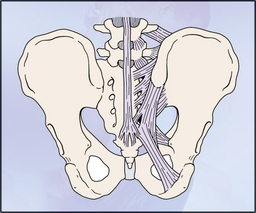
SELECTED MOVEMENTS
![]()
COMMON STRESS TESTS (PASSIVE MOVEMENTS)
![]()
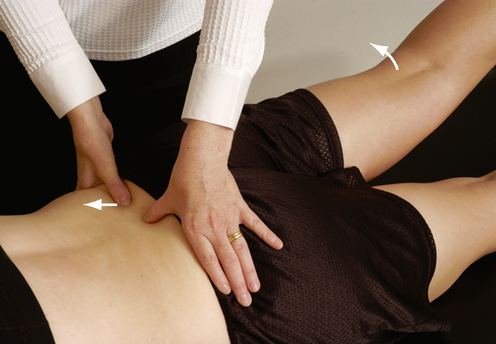
![]()
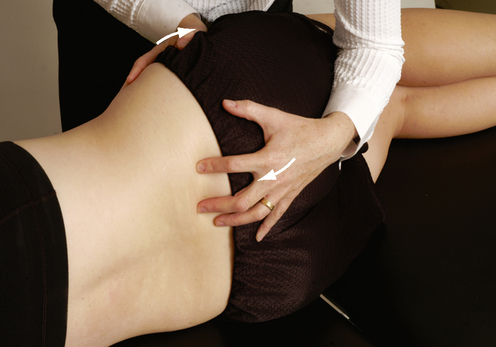
![]()
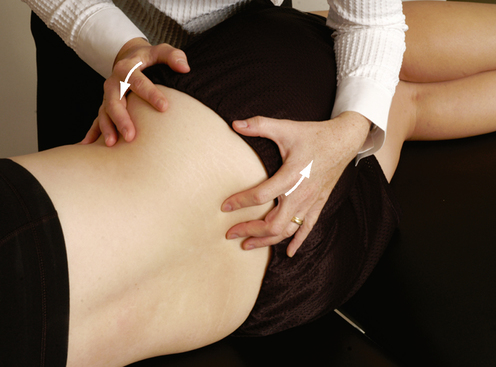
![]()

